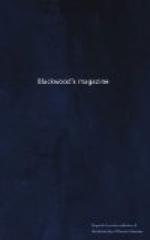“But let my due feet
never fail
To walk the studious cloisters
pale,
And love the high embowed
roof,
With antique pillars, massy
proof,
And storied windows richly
dight,
Casting a dim religious light,
There let the pealing organ
blow
To the full-voiced choir below,
In service high, and anthem
clear,
As may with sweetness, through
mine ear,
Dissolve me into extasies,
And bring all heav’n
before mine eyes.”
At the period of which we speak, the want of music in the services of the church seems to have been severely felt, though perhaps the simpler forms of the new ritual were comparatively but little adapted for musical display. Great exertions were made throughout the kingdom by the deans and chapters to restore the efficiency of the choirs; and Elizabeth, in the exercise of what then appeared an undoubted prerogative of the crown, issued her warrant for the impressment of singing men and boys for the castle of Windsor. The churches and cathedrals still, indeed, retained their organs; “the choirs and places where they sing” were still in being; all the materiel was at hand; but, with the exception of the production of John Marbeck, called “The Book of Common Prayer Noted,” which was printed in 1550, there was as yet no music for the new services in the English language. Two years after the accession of Elizabeth, and one year after the bill for the uniformity of common prayer had passed the legislature, a choral work, “very necessarie for the church of Christ to be frequented and used,” was published, among the authors of which the name of Tallis appeared. The musical necessities of the newly established church appear to have stimulated or developed talents which, under other circumstances, might perhaps have been less prominently brought forward: at all events, the demand for this music would seem a principal reason




